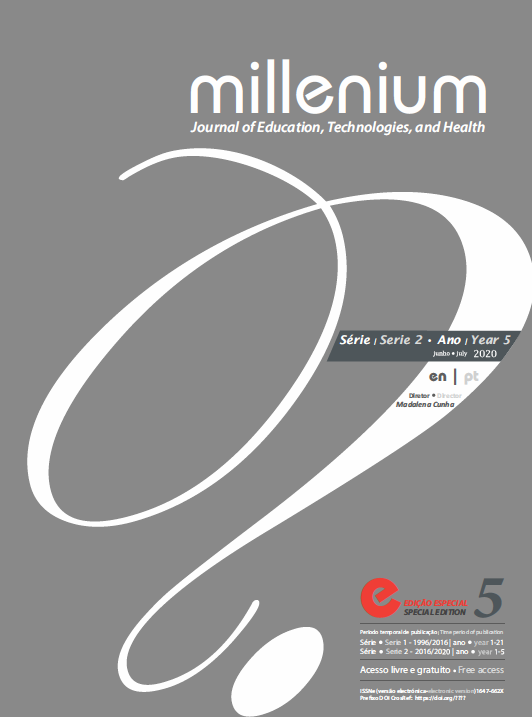Control de la higiene de la superficie
comparabilidad del método de biolum
DOI:
https://doi.org/10.29352/mill0205e.34.00342Palabras clave:
superficies comunes, método visual, luminómetroResumen
Introductión: Las infecciones asociadas con la atención de salud (IACS) se han relacionado con la presencia de microorganismos multirresistentes en las superficies, es necesario controlar su higiene para garantizar la seguridad del medio ambiente. La aplicación de escala visual se simplifica, pero el uso del luminómetro bioluminiscencia trifosfato de adenosina método, es prometedora en el control de la higiene.
Objetivos: Evaluar la eficacia de las superficies proceso de limpieza.
Métodos: El estudio observacional prospectivo se llevó a cabo en una unidad crítica de cinco días consecutivos. La técnica de muestreo no se aplicó conveniencia probabilístico y la escala visual y el luminómetro antes y después de la limpieza de las superficies. El proceso de limpieza se llevó a cabo por los mismos asistentes de operación, utilizando el producto detergente método de dos etapas y / desinfectante.
Resultados: La muestra incluye 300 observaciones (150 antes / después de 150) en áreas seleccionadas tocan. De las 131 observaciones para una buena relación calidad-precio, 56 se midieron mediante el luminómetro el 75 por escala visual. No valores satisfactorios, 169 observaciones, 94 se midieron por el luminómetro el 75 por la escala visual. Después de que el proceso de limpieza, las observaciones valores insatisfactorios fueron identificados por el luminómetro 31 18 a través de una escala visual. Las diferencias significativas se localizaron no valores satisfactorios (<500 RLU) en el luminómetro y valores satisfactorios (> 500 RLU) en el rango visual.
Conclusionnes: El método de ATP se presenta como un recurso educativo y el seguimiento / auditoría para medir la calidad de la limpieza de superficies de alto contacto, imponiendo validar su contribución a la prevención de las infecciones hospitalarias.
Descargas
Citas
Bathke, J., Cunico, P. d., Maziero, E. C., Cauduro, F. L., Sarquis, L. M., & Cruz, E. D. (2013). Infraestruturas e adesão à higienização das mãos: Desafios à segurança do paciente. Rev Gaúcha Enferm, 34(2), 78-85.
Boyce, J. M., Havill, N. L., Dumigan, D. G., Golebiewski, M., Balogun, O., & Rizvani, R. (2009). Monitoring of effectiveness of hospital cleaning practices by use of an adenosine triphosphate bioluminescence assay. Infection control and hospital epidemiology, 30(7), 678-683. DOI: 10.1086/598243
Care, H. (2013). 3M - Manual do usuário. Alemanha: 3M Deutschland GmbH.
Carling, P. C., MD, & Bartley, J. M. (2010). Evaluating hygienic cleaning in health care settings: What you do not know can harm your patients. American Journal of Infection Control, 38(5 Suppl 1), S41-50. DOI: 10.1016/j.ajic.2010.03.004
Dancer, S. (2004). How do we assess hospital cleaning? A proposal for microbiological standards for surface hygiene in hospital. JHI, 56, 10-15.
Dancer, S. (2009). The role of environmental cleaning in the controlo acquised infection. Journal of Hospital Infection, 1-8.
Ferreira, H. (2012). Dissertação para obtenção de grau de mestre em Infeção em Cuidados de Saúde – Utilização do Método ATP bioluminescência na avaliação da eficácia da limpeza e desinfeção de superfícies em cuidados de saúde primários
Giles, S. A. (2012). Acedido em www.infectioncontroltoday.com
Gomes, C.H., Barros, A.A., Andrade, M.C.L., & Almeida, S. (2007). Adesão dos profissionais de saúde à lavagem das mãos em enfermaria de clínica médica e cirúrgica. Rev. Med. Minas Gerais, 5-9.
Guh, A., & Carling, P. (2010). Options for evaluating environmental cleaning. National Center for Emerging and Zoonotic Infectious Diseases.
Oliveira, A. C., & Viana, R. E. (2014). Adenosina trifosfato bioluminescência para avalaição de limpeza de superfícies: uma revisão integrativa. Revista Brasileira de Enfermagem REBEn, 67(6), 987-93. DOI: https://doi.org/10.1590/0034-7167.2014670618
Ordem dos Enfermeiros (2016). Cuidados à pessoa com doença renal crónica terminal em hemodiálise – Guia orientador de boa Pática, pp.3-97.
Paiva, J. A. (2015). É uma miragem pensar que podemos caminhar para a infeção zero. Tecno hospitalar, 67, 4-8.
Pina, E. (2012). Métodos de Avaliação de Limpeza de Superfícies. Higiene Hospitalar, pp. 2-4.
Richards, V. (2015). National institutes of health/U.S. National Library of Medicine. Acedido em Health day. www.nlm.ninh.gov/medlineplus/news/fullstory.
Rigotti, M. A., Ferreira, A. M., Nogueira, M. C., Almeida, M. T., Guerra, O. G., & Denise, A. (2015). Evalution of three surface friction techniques for the removal of organic matter. Texto & Contexto- Enfermagem, 24(4), 1061-1070. DOI: https://doi.org/10.1590/0104-0707201500003690014
Reis, L. (2012). Sistema de Lavagem de 2 Passos. Tecno Hospital, pp. 38,43.
Rocha, J. G. (2015). Conceção dos espaços e materiais de revestimento. Tecno Hospital 67, 12-16.
Sherlock, O. C., O´Connell, N., Creamer, E., & Humphreys, H. (2009). Is it really clean? An evaluation of the efficacy of four methods for determining hospital cleanliness. Journal of Hospital Infection, 72(2):140-146. DOI: 10.1016/j.jhin.2009.02.013
Ferreira, H. (2012). Utilização do método ATP bioluminescência na avaliação da eficácia da limpeza e desinfeção de superfícies em cuidados de saúde primários (tese de mestrado). Universidade Católica Portuguesa Instituto de Ciências da Saúde
Descargas
Publicado
Cómo citar
Número
Sección
Licencia
Los autores que sometan propuestas para esta revista estarán de acuerdo con los siguientes términos:
a) Los artículos serán publicados según la licencia Licença Creative Commons (CC BY 4.0), conforme el régimen open-access, sin cualquier coste para el autor o para el lector.
b) Los autores conservan los derechos de autor y conceden a la revista el derecho de la primera publicación, se permite la divulgación libre del trabajo, desde que sea correctamente atribuida la autoría y la publicación inicial en esta revista.
c) Los autores están autorización para firmar contratos adicionales separadamente, para la distribución no exclusiva de la versión del trabajo publicada en esta revista (ej.: publicar en un repositorio institucional o como capítulo de un libro), con reconocimiento de la autoría y publicación inicial e esta revista.
d) Los autores tienen permiso y son alentados a publicar y distribuir su trabajo on-line (ej.: en repositorios instituciones o en su página personal) ya que eso podrá generar alteraciones productivas, así como aumentar el impacto y la citación del trabajo publicado.
Documentos necesarios para la sumisión
Plantilla del artículo (formato editable)





